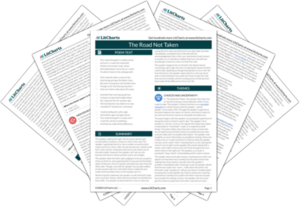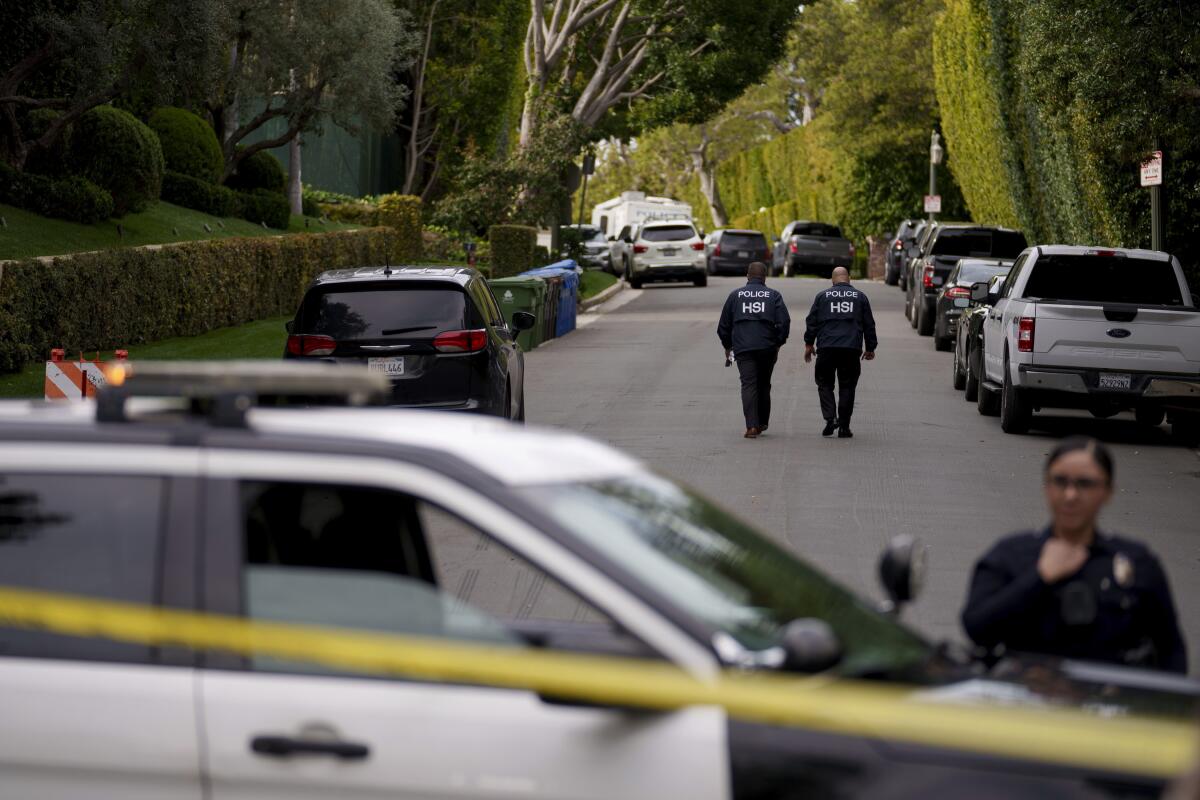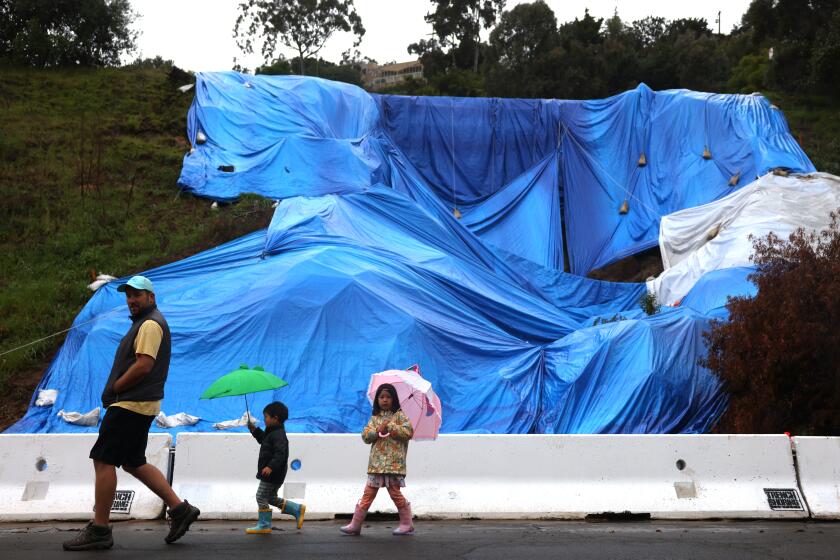

The Road Not Taken Summary & Analysis by Robert Frost
- Line-by-Line Explanation & Analysis
- Poetic Devices
- Vocabulary & References
- Form, Meter, & Rhyme Scheme
- Line-by-Line Explanations

Written in 1915 in England, "The Road Not Taken" is one of Robert Frost's—and the world's—most well-known poems. Although commonly interpreted as a celebration of rugged individualism, the poem actually contains multiple different meanings. The speaker in the poem, faced with a choice between two roads, takes the road "less traveled," a decision which he or she supposes "made all the difference." However, Frost creates enough subtle ambiguity in the poem that it's unclear whether the speaker's judgment should be taken at face value, and therefore, whether the poem is about the speaker making a simple but impactful choice, or about how the speaker interprets a choice whose impact is unclear.
- Read the full text of “The Road Not Taken”

The Full Text of “The Road Not Taken”
1 Two roads diverged in a yellow wood,
2 And sorry I could not travel both
3 And be one traveler, long I stood
4 And looked down one as far as I could
5 To where it bent in the undergrowth;
6 Then took the other, as just as fair,
7 And having perhaps the better claim,
8 Because it was grassy and wanted wear;
9 Though as for that the passing there
10 Had worn them really about the same,
11 And both that morning equally lay
12 In leaves no step had trodden black.
13 Oh, I kept the first for another day!
14 Yet knowing how way leads on to way,
15 I doubted if I should ever come back.
16 I shall be telling this with a sigh
17 Somewhere ages and ages hence:
18 Two roads diverged in a wood, and I—
19 I took the one less traveled by,
20 And that has made all the difference.
“The Road Not Taken” Summary
“the road not taken” themes.

Choices and Uncertainty
- See where this theme is active in the poem.

Individualism and Nonconformity

Making Meaning
Line-by-line explanation & analysis of “the road not taken”.
Two roads diverged in a yellow wood, And sorry I could not travel both And be one traveler,

long I stood And looked down one as far as I could To where it bent in the undergrowth;
Then took the other, as just as fair, And having perhaps the better claim, Because it was grassy and wanted wear;
Though as for that the passing there Had worn them really about the same, And both that morning equally lay In leaves no step had trodden black.
Lines 13-15
Oh, I kept the first for another day! Yet knowing how way leads on to way, I doubted if I should ever come back.
Lines 16-17
I shall be telling this with a sigh Somewhere ages and ages hence:
Lines 18-20
Two roads diverged in a wood, and I— I took the one less traveled by, And that has made all the difference.
“The Road Not Taken” Symbols

Diverging Roads
- See where this symbol appears in the poem.

The Road Less Traveled
“the road not taken” poetic devices & figurative language, extended metaphor.
- See where this poetic device appears in the poem.
“The Road Not Taken” Vocabulary
Select any word below to get its definition in the context of the poem. The words are listed in the order in which they appear in the poem.
- Yellow wood
- Undergrowth
- See where this vocabulary word appears in the poem.
Form, Meter, & Rhyme Scheme of “The Road Not Taken”
Rhyme scheme, “the road not taken” speaker, “the road not taken” setting, literary and historical context of “the road not taken”, more “the road not taken” resources, external resources.
"The Most Misread Poem in America" — An insightful article in the Paris Review, which goes into depth about some of the different ways of reading (or misreading) "The Road Not Taken."
Robert Frost reads "The Road Not Taken" — Listen to Robert Frost read the poem.
Book Review: "The Road Not Taken," by David Orr — Those looking for an even more in-depth treatment of the poem might be interested in David Orr's book, "The Road Not Taken: Finding America in the Poem Everyone Loves and Almost Everyone Gets Wrong."
LitCharts on Other Poems by Robert Frost
Acquainted with the Night
After Apple-Picking
Desert Places
Dust of Snow
Fire and Ice
Home Burial
Mending Wall
My November Guest
Nothing Gold Can Stay
Stopping by Woods on a Snowy Evening
The Death of the Hired Man
The Oven Bird
The Sound of the Trees
The Tuft of Flowers
The Wood-Pile
Everything you need for every book you read.

(92) 336 3216666
- The Road Not Taken
Read below our complete notes on the poem “The Road Not Taken” by Robert Frost. Our notes cover The Road Not Taken summary, themes, and a detailed literary analysis.
Background of the Poem
“The Road Not Taken” is a poem by Robert Frost. It was published in The Atlantic Monthly in August 1915. This poem was used as an opening poem of Robert Frost’s collection Mountain Interval in 1916. It presents a narrator who is recalling his journey through the forest when he had to choose between two divergent roads. This poem is one of the most well-known and most often misunderstood poems of Robert Frost.
Frost’s Inspiration for “The Road Not Taken”
The inspiration of “The Road Not Taken” came when Frost noticed a familiar habit of his close friend in England, Edward Thomas. Frost used to frequently take long walks with Thomas through the countryside. Edward Thomas, an English-Welsh poet, would always regret not taking the other path. Thomas would always sigh over what they would have seen if they had taken the other path. Thomas would think that if they had chosen the other path, it might have offered them many opportunities to see and experience nature.
At such times of regret, Frost would always tell Thomas that “It does not matter what road you take. You will always regret and wish you had taken the other one.” In this way, Frost wrote this poem to be a light-hearted one but it turned to be more serious and ambiguous for readers.
Historical Context
There were different historically significant events going on in 1916. Therefore, it is not possible to identify one specific meaning as the one that the poet had in mind. When this poem was written, things of great importance were occurring in the poet’s life and social order. Firstly, in 1916, an act of Congress made “The National Park Services” to keep millions of acres of the forest land safe for the enjoyment of future generations.
Secondly, Albert Einstein came up with his theory of relativity which claimed that things are dependent on relative circumstances and not on absolute knowledge. The end result of any choice that a person makes is not absolute. This affected the thinking of people to a great extent. They started treating events and feelings relative. The pleasing connection with nature and one’s personal feelings regarding one’s future are the main subjects of this poem.
Industrial Revolution and World War I
The industrial revolution in the late 1800s brought advances in international commerce through advances in travel and communication. It became difficult for economic powers like the U.S. and Japan to stay uninvolved. The American public wanted no involvement in World War I. It was a year after this poem was published when America had to choose between joining the war.
When Frost and his family went home, England was already at war. The central subject of “The Road Not Taken” reflects the position of the two countries where Frost had lived. Britain joined other countries in the fight and America tried to stay away from it. Each side has a good reason to choose their path and face the consequences.
Urbanization
The relation between people and society is the central core of “The Road Not Taken.” The poet asks the question of whether one must follow the footsteps of the majority or the least traveled path. In 1916, this question was part of the debate. Industrialization was the dominant social force in the last half of the nineteenth-century.
As factories went up, people came to cities to get jobs. Immigrants from other countries came for the same reason. The cities started to construct new quarters for the coming families. These living quarters were made together on top of one another. It created a frustrating situation for those people who came from open lands.
By 1916, artists, philosophers, and other sensitive people started questioning the depersonalizing effects of urbanization and industrialization. They were worried about the situation that has changed the nature of human thinking. People followed what the majority was doing and they lost connection with themselves and nature as well. They couldn’t decide on their own and they relied on others for prosperity. This poem raises the question regarding individuality and independence.
The Road Not Taken Summary
The speaker of the poem walks through a forest where trees have shed their yellow leaves in autumn. He reaches a junction where the road becomes two diverging roads. The speaker is one person; therefore, he regrets that he cannot travel both roads. He stands at the fork in the road for a long time. He tries to see where one of the paths does go. The speaker cannot see very far because the forest is dense. Also, the road is not straight.
The speaker then takes the other path. He judges the second path as good a choice as the first one. He considers it a better option of the two since it is grassy. The path chosen by the speaker is also less worn than the first path. When the speaker starts walking on the second road, he thinks that the two paths are more or less equally ragged.
The speaker recalls that both roads were covered with leaves in the morning. These leaves had not been yet turned black by foot walks. He exclaims that he is saving the first road and will travel it some other day. Immediately, the speaker contradicts his statement with the recognition that in one’s life, one road leads to another road. Therefore, it is unlikely to say that he will ever get a chance to come back to the first road.
The speaker visualizes his distant future when he will be narrating, with a sigh, the story of his choosing which road to travel. The speaker speaks as if he is looking back from his future at the present choice. He says that he had to choose between two roads, and he chose the one which was less traveled. The speaker from the future says that the result of that selection between roads has made all the differences in the speaker’s life.
Themes in the Poem
The central theme of the poem appears when the speaker faces crossroads. The first line of the poem says that “Two roads diverged in a yellow wood.” It is a classic conceit for a life decision. The speaker then begins to consider the two options. He tries to select a better choice. However, Frost’s poem claims that our choices are less real than we think. Our power to perceive meaningful differences among options is negligible—the two roads are “as just as fair.”
According to the poem, fate constantly guides us to take a step forward despite our attempts to exercise free will. Our choices fall inferior to our fate which decides all.
Choices and Uncertainty
In “The Road Not Taken,” the speaker describes himself as a confused person who is facing a situation to choose between two roads. The speaker’s choice acts as an extended metaphor for all the choices that every individual must make in life. Through the speaker’s experience, the poem describes the nature of choices and the situation when a person is forced to choose.
The speaker’s first emotion is “sorrow,” as he regrets the reality that it is impossible to “travel both” roads or to experience both things. The poem explores that every choice demands the loss of opportunity. Also, choices are painful because they are made with incomplete information.
The speaker seeks to collect as much information as possible by observing “down one (road) as far as I could.” However, there is a limit to what the speaker can see and the rest of the things are out of his sight. The speaker has not enough information about which one path is the right one. No one can truly predict what each choice will bring. This poem reflects the anxiety that everyone experiences whenever they step forward on a new road in life.
After making a final choice, one loses the opportunity to experience the things that are not chosen. The choice of one thing cuts off the knowledge of the alternate choice. It leaves one with uncertainty and they never know if they had made the right choice.
The final line of the poem is a reminder that one’s choices in life make all the difference. It is the choice that gives identity to a person.
I ndividualism and nonconformity
In “The Road Not Taken,” the speaker has to choose between two roads. He chooses the one which is less traveled. The choice between the two roads can be treated as a conventional choice versus unconventional choice. By selecting the less-traveled path, the speaker shows that he values individualism over conformity
While deciding which road to take, the speaker notes that the second is “just as fair” as the first. However, the less worn-out state of the road makes the speaker choose it. Notably, the absence of signs of travel on the chosen path is taken positively rather than negatively. Rather than saying that the road looked as if it had not traveled much, the speaker states that it was “grassy”. Being grassy shows it is the result of a very few people walking on it. The speaker also says that the second road “wanted wear.”
It means that the road itself demanded to walk on it. In this way, the speaker suggests that nonconformity is a positive trait. It also shows that popularity makes things less attractive.
Despite the speaker’s suggestion for nonconformity, the poem remains ambiguous about whether the grassy road will lead to something better. In this way, firstly, the poem states that it is hard to identify what is non-conformist. After choosing the road, the two roads seem about the same. It confuses the speaker more that he does not know if the road was less traveled. The speaker seems to sense that though he or she has attempted to take the road “less traveled,” there’s no actual way to know if it was less traveled.
Secondly, the poem subtly suggests that no guarantee choosing a less walked path will make a positive difference. There is also a third opinion offered by the poem as well. The speaker says that selecting the path made all the differences. It is not the path that makes the difference because no one can truly measure which path is traveled less. The difference is made by choosing a direction that is not conventional. In this way, the poem teaches that it is one’s effort that matters.
Making meaning
This poem suggests that it is less important to think if the speaker’s choice made all the difference from what he believes that it did. People create a fictional version of their lives by making beliefs and meaning when they are not there. However, this poem does not consider meaning-making as deceitful but rather as a part of human life.
Another theme in this poem is indecision. In reality, the speaker of the poem has to choose to travel one road between the two. However, he overthinks and procrastinates. He tries to look for all the experiences he has to face on each road. At last, he decides to take the one that was grassy and less traveled. After making the decision, the speaker still concerns his future and the consequences of his choice. If it was one road, it would be easier for him to travel immediately. Similarly, people face such a situation in their lives, and therefore, they confront indecisiveness.
Self-belief
The speaker in the poem decides to choose the road himself. He does not rely on someone else to direct him. The speaker seems to have confidence in himself. Therefore, he puts himself responsible for all the consequences in the future regarding his choice in the present.
This poem suggests that one should have faith in one’s self. Such quality of independent decision- making helps people learn many things. They start valuing their intuition. They build confidence in explaining their decision. In this way, trust in one’s self develops.
The Road Not Taken Literary Analysis
“The Road Not Taken” is a poem about the struggles of the speaker to decide which one of the two roads he must choose. It has both literal and metaphorical meanings. The two roads symbolize two directions in life to follow. This poem highlights those moments in life when it is necessary to take a firm decision without enough information.
This poem questions a person’s free will and determinism. The speaker in the poem consciously decides which way he has to go. He rejects the path with the bend in it. Also, external factors play an important role in his decision-making process.
This poem is about the sacrifices that one has to make. To make a difference, a person has to prefer one option over another and belief in him.
The poet travels on foot in the woods. He reaches a junction where two roads diverged. Suddenly, he realizes that as a single traveler, he can’t travel both roads. Here, two roads are used as a metaphor for two ways of life. The forest is yellow, which means that it is autumn and the trees are shedding their yellow leaves.
As the speaker can’t travel both the roads, he stands there to try to select which path he is going to travel to. However, the poet wants to go down both roads. He is thinking about it hard. He is looking down one road. He tries to see where it goes. The thickness of the woods blocks the view of the speaker. Also, the road is bent in shape and not linear.
The phrase “as just as it is fair” means righteous and equal. This phrase is an example of a simile. The speaker decides to examine the other path because he finds the other road to be less traveled and full of grass
“Wanted wear” is an example of personification. The speaker has personified the grassy road and says that it wanted people to walk on it.
After traveling through the road, the speaker explores that both the roads are equally traveled. At first, the speaker finds the first road to be the more traveled one. Then, he says that both the roads seem equally traveled. The phrase ‘as for that” refers to the road being less worn.

Lines 11-15
Here, the speaker finds that both the paths are looking the same in the morning. After this, he goes in the flashback. It was a tough decision for him to choose the real road because, in the morning, he was the first person who walked on the road. There were no other footsteps. For this reason, he couldn’t decide the right path immediately as no step had left marks on the leaves on the roads to show him the right road. In these lines, the speaker has used imagery.
The poet exclaims that he saves the first passage for another time. He knows that “way leads” to another, and then another. He knows that in this way, one ends up very far from where one has started the journey. The poet here saves the first road for another day. Additionally, the speaker doesn’t think he will ever be able to come back and take the other path to experience it.
Lines 16-20
This stanza shows the speaker’s failure in choosing the right path. The word ‘sigh’ suggests that he will be disappointed with the decision. He accepts that he will be responsible if he fails in taking the right decision. “Ages and ages” is an example of alliteration.
The poet took the road that no one else did and it made the difference in his life that made him unique. One’s individualism matters. Nevertheless, a “difference” may mean success or complete failure.
Mood and tone
It is important to understand the difference between tone and mood. The tone of the poem is how the author of the work feels about it. One can identify it by examining the diction of the work. The diction of the poem is descriptive.
By using words like “diverged,” “sorry,” and “sigh,” the tone of the poem is about longing and meditation. This poem is reflective and thoughtful. The speaker is confused between two options. It is a turning point in the life of the speaker. He has to choose one path and leave behind the other forever.
The speaker is thinking about the pros and cons of the situation. The decision needs a serious approach to consider the outcomes of each choice.
The mood of the poem is related to the readers and their feelings about the poem. In this way, the mood of the poem is somber and anxious in the beginning but hopeful at the end.
Narrative poem
“The Road Not Taken” is a narrative poem. It has a character, setting, plot, and conflict. The conflict in the poem is the indecisiveness of the persona of the poem.
Point of View
“The Road Not Taken” is narrated from the first-person point of view. The speaker describes his experience by representing himself as “l.” It enables readers to understand the speaker’s feelings and thoughts.
Style, structure, and Rhyme
“The Road Not Taken” consists of four stanzas. Each stanza comprises five lines. The rhyme is strict with the rhyming scheme ABAAB, except for the last line. It is written in iambic tetrameter.
The setting of the poem is “yellow woods.” It is a place where one road is divided into two. The yellow color depicts the autumn season. The road is in a deserted place because there are no other travelers. The speaker standing at the junction sees that one road is gassier than the other.
The speaker of this poem has no name and identity. There is no depiction of the physical appearance of the speaker. It represents the whole of human nature. Human nature wants life to have meaning and purpose. The speaker of the poem is a traveler who comes up with an important decision to make.
The crossroads symbolize the journey of life. It also signifies the destination. People come across decision- making moments that contain equally balanced alternatives. One has to consider the advantages and disadvantages before making a choice.
Literary Devices in the Poem
Alliteration.
Alliteration is the repetition of similar consonant sounds in a series of words at a stressed syllable. In the second stanza, the sound /w/ is repeated in “ w anted w ear.” Similarly, the sound /f/ is repeated in “ f irst f or” in the third stanza.
It is the repetition of identical vowel sounds in successive words. In this poem, assonance contributes to establish the rhyme of the poem and make it easily readable. “L oo ked down one a s f a r a s I c ou ld,” “ a s just a s f a ir,” “it w a s gr a ssy and w a nted we a r,” and “ a ges and a ges” are all examples of assonance.
Connotation
Connotation means the secondary meaning of the word. The primary meaning of “The Road” is a path that a person travels. Its secondary meaning is of “choice.” The presence of two paths/two choices gives the feeling of indecision to the speaker.
It is the repetition of consonant sounds at the start, middle or end of the words. “Yello w w oods,” “ t o where i t ben t ,” “ th en took the o th er,” “ w anted w ear,” and “kno w ing ho w w ay leads on to w ay” are all the examples of consonance.
This whole poem is an extended metaphor. The two roads act as a metaphor for two choices in life. The thinking of the speaker about the selection of one road is also a metaphor used for thinking before taking a decision.
The yellow color of the woods is also a metaphor. It is compared with the moment when a person has to choose the downfall of his life or when he is getting old.
Personification
Personification means to attribute human qualities to nonhuman things. Personification occurs in the second stanza when the speaker says that the road was grassy and “wanted wear.” By saying that the road has a “better claim,” the speaker states that the road intends to attract travelers.
For most of the poem, the speaker is describing the setting. Visual imagery is used because the speaker is sketching the scenery. He says that the road is yellow which creates a mental image of trees shedding leaves in autumn. The worn-out state of the road also contributes to the meaning of the poem. There is auditory imagery as well by using the word “sigh.”
The irony in the poem is in the idea of multiple significance of the road. They are not simple roads because they have a secondary meaning as well. The speaker of the poem has to take the road of the majority or the road with fewer travelers. The eventual choice of the speaker is also ironic. Both the roads are equally worn out but the speaker still chooses the second.
More From Robert Frost
- Mending Wall
A Guide to Robert Frost's "The Road Not Taken"
Brian Lawrence / Getty Images
- Favorite Poems & Poets
- Poetic Forms
- Best Sellers
- Classic Literature
- Plays & Drama
- Shakespeare
- Short Stories
- Children's Books
- B.A., English and American Literature, University of California at Santa Barbara
- B.A., English, Columbia College
When analyzing Robert Frost 's poem, "The Road Not Taken," first look at the shape of the poem on the page: four stanzas of five lines each; all lines are capitalized, flush left, and of approximately the same length. The rhyme scheme is A B A A B. There are four beats per line, mostly iambic with interesting use of anapests.
The strict form makes it clear that the author is very concerned with form, with regularity. This formal style is totally Frost, who once said that writing free verse was “like playing tennis without a net.”
On first reading, the content of “The Road Not Taken” also seems formal, moralistic, and American:
Two roads diverged in a wood, and I— I took the one less traveled by, And that has made all the difference.
These three lines wrap the poem up and are its most famous lines. Independence, iconoclasm, self-reliance—these seem the great American virtues. But just as Frost’s life was not the pure agrarian philosophe’s we imagine (for that poet, read Fernando Pessoa’s heteronym, Alberto Caeiro, especially the terrific “Keeper of Sheep”), so “The Road Not Taken” is also more than a panegyric for rebelling in the American grain.
The Tricky Poem
Frost himself called this one of his “tricky” poems. First, there is that title: “The Road Not Taken.” If this is a poem about the road not taken, then is it about the road that the poet actually does take—the one most people do not take? This is the path that was, as he states,
perhaps the better claim, Because it was grassy and wanted wear;
Or is it about the road the poet did not take, which is the one that most people take? Or, for all that, is the point actually that it does not matter really which road you take, because even when you look way, way down to the bend you can’t actually tell which one to choose:
the passing there Had worn them really about the same. And both that morning equally lay In leaves no step had trodden black.
Take heed here: The roads are really about the same. In the yellow woods (what season is this? what time of day? what feeling do you get from “yellow?”), a road splits, and our traveler stands for a long time in Stanza 1 looking as far as he can down this leg of the “Y”—it is not immediately apparent which way is “better.” In Stanza 2 he takes “the other,” which is “grassy and wanted wear” (very good use of “wanted” here—for it to be a road it must be walked on, without the wear it is “wanting” that use). Still, the nub is, they both are “really about the same.”
Are you reminded of Yogi Berra’s famous quote, “If you come to a fork in the road, take it?” Because in Stanza 3 the similarity between the roads is further detailed, that this morning (aha!) no one has yet walked upon the leaves (autumn? aha!). Oh well, the poet sighs, I’ll take the other one next time. This is known, as Gregory Corso put it, as “The Poet’s Choice:” “If you gotta choose between two things, take both of ‘em.” However, Frost acknowledges that usually when you take one way you keep going that way and rarely if ever circle back to try the other. We are, after all, trying to get somewhere. Aren’t we? However, this, too, is a loaded philosophical Frost question with no easy answer.
So we make it to the fourth and final Stanza. Now the poet is old, remembering back to that morning on which this choice was made. Which road you take now seems to make all the difference, and the choice was/is clear, to take the road less traveled. Old age has applied the concept of Wisdom to a choice that was, at the time, basically arbitrary. But because this is the last stanza, it seems to carry the weight of truth. The words are concise and tough, not the ambiguities of the earlier stanzas.
The last verse so upends the whole poem that a casual reader will say “Gee, this poem is so cool, listen to your own drummer, go your own way, Voyager!” In fact, though, the poem is trickier, more complicated.
In fact, when he was living in England, which is where this poem was written, Frost would often go on country rambles with the poet Edward Thomas, who used to try Frost’s patience when trying to decide which route to take. Is this the final trickiness in the poem, that it is actually a personal gibe at an old friend, saying, “Let’s go, Old Chap! Who cares which fork we take, yours, mine or Yogi’s? Either way, there’s a cuppa and a dram at the other end!”?
From Lemony Snicket’s The Slippery Slope : “A man of my acquaintance once wrote a poem called ‘The Road Less Traveled,’ describing a journey he took through the woods along a path most travelers never used. The poet found that the road less traveled was peaceful but quite lonely, and he was probably a bit nervous as he went along, because if anything happened on the road less traveled, the other travelers would be on the road more frequently traveled and so couldn’t hear him as he cried for help. Sure enough, that poet is now dead.”
~Bob Holman
- Defining "Symbol" in Language and Literature
- Biography of Robert Frost
- Reading Notes on Robert Frost’s Poem “Nothing Gold Can Stay”
- What Is an Iamb in Poetry?
- Understanding 'The Pasture' by Robert Frost
- Presidential Inauguration Poems
- Practice in Using Quotation Marks Correctly
- About Robert Frost's "Stopping by Woods on a Snowy Evening"
- Patriotic Poems for Independence Day
- A Collection of Classic Love Poetry for Your Sweetheart
- Robert Frost's 'Acquainted With the Night'
- A Classic Collection of Bird Poems
- What Is Poetry, and How Is It Different?
- Poems of Protest and Revolution
- A Study Guide for Shakespeare's Sonnet 1
- Shakespeare's Sonnet 116 Study Guide
- Poems & Essays
- Poetry in Motion NYC
Home > Poems > The Road Not Taken
The Road Not Taken
By Robert Frost
Two roads diverged in a yellow wood, And sorry I could not travel both And be one traveler, long I stood And looked down one as far as I could To where it bent in the undergrowth; Then took the other, as just as fair, And having perhaps the better claim, Because it was grassy and wanted wear; Though as for that the passing there Had worn them really about the same, And both that morning equally lay In leaves no step had trodden black. Oh, I kept the first for another day! Yet knowing how way leads on to way, I doubted if I should ever come back. I shall be telling this with a sigh Somewhere ages and ages hence: Two roads diverged in a wood, and I— I took the one less traveled by, And that has made all the difference.

The Symbolism of ‘The Road Not Taken’
By Dr Oliver Tearle (Loughborough University)
‘The Road Not Taken’ is one of Robert Frost’s most famous poems. Frost (1874-1963) was an American poet whose work was at odds with many of his modernist contemporaries, such as William Carlos Williams, Wallace Stevens, and T. S. Eliot. He disliked free verse – memorably characterising it as ‘playing tennis with the net down’ – and his work is more direct, and often more Romantic, than much modernist writing.
And ‘ The Road Not Taken ’, a poem rich in symbolism, is a good example of Frost’s style and approach. However, the poem is far from simple. Indeed, it may well be the most misinterpreted poem in all of American literature.
The poem appeared in his first collection, Mountain Interval , in 1916. Let’s take a closer look at some of the key symbols in the poem so that we can understand its meaning more clearly.
The Yellow Wood.
The first symbol we encounter in ‘The Road Not Taken’ is also the setting for the poem: the yellow wood through which the poem’s speaker is travelling.
On one level, the wood symbolises autumn: the wood is yellow because the leaves – once green during spring and summer – have turned yellow as summer has given way to autumn. But autumn itself carries fairly heavy connotations of death, decay, ageing, and a myriad other things.
It’s also true that the two roads the speaker has to choose between wouldn’t have been concealed beneath the freshly fallen leaves if it wasn’t autumn. Autumn is the time of year when there’s an abundance of leaves fallen on the ground.
Frost tells us that his encounter with the two roads took place ‘that morning’: it is so early that there are no signs that anyone has disturbed the yellow leaves so far that day.
It is morning: the time when night has given way to day. So if not quite a poem about the transition point between two time periods, ‘The Road Not Taken’ is certainly a poem about something that has recently passed (summer, night) and given way to something new (autumn, day).
This is fitting, of course, for a poem all about the moment when Frost – or his speaker, at least – is forced to make a decision about which way to take, as he comes to a fork in the road. It is a time of new beginnings, of setting off (literally) on a new road.
The Two Roads.
The central ‘story’ of ‘The Road Not Taken’ involves the speaker’s choice between two possible roads he can take through the woods. Faced with this decision, he decides to take the ‘one less traveled by’.
But this is a fiction, a lie he has told himself. He freely confesses that really, both paths were ‘about the same’ in terms of how worn they were with previous travellers’ footprints; and they were ‘equally’ concealed beneath freshly fallen leaves.
So these two roads don’t, in fact, symbolise two very different ‘paths’ open to us: one that is well-trodden and more popular, the other more neglected and less worn.
The meaning of the poem is that it didn’t really matter which of the two roads were taken, as they were both essentially the same, with nothing to distinguish between them. But Frost’s poem is about the stories we tell ourselves, the fictions we create, to make our decisions appear to carry more meaning.
So he decides to concoct the fiction that one was ‘less traveled’ and to tell people that he took that one because it was less travelled by. But the roads are not just roads in a wood: on some level, they are symbols for life itself.
After all, we talk about ‘the journey of life’; we talk about ‘being on the right path’ or ‘walking the road of life together’, and so on. We often conceptualise our lives as journeys, where we are on different roads (or, if we’re lucky, the same road) and moving towards a destination, making progress of some kind.
Here, the speaker does keep talking and so is going somewhere, but where he is going remains unknowable and unknown. The symbolism of the two roads, then, becomes obvious. Frost is pointing out that when we make one decision, we are often shutting down another option. We cannot take both roads: we cannot take both jobs; we cannot marry two people we’re in love with; and so on, and so on.
The poem, then, is about ‘the road not taken’ because it is partly a lament for these missed opportunities and these roads never travelled. We cannot say if they would have been better roads for us than the ones we did end up taking. But we are often haunted by the possibility, the ‘what if’, concerning where those other roads might have led.
Discover more from Interesting Literature
Subscribe now to keep reading and get access to the full archive.
Type your email…
Continue reading
Sean ‘Diddy’ Combs faces sweeping sex-trafficking inquiry: What the feds have, need to prove

- Show more sharing options
- Copy Link URL Copied!
Over the last few months, a legendary name in the music world has faced a series of shocking allegations of sexual abuse.
In civil lawsuits, four women have accused Sean “Diddy” Combs of rape, assault and other abuses, dating back three decades. One of the allegations involved a minor. The claims sent shock waves through the music industry and put Combs’ entertainment empire in jeopardy.
Now, the hip-hop mogul’s legal troubles have worsened considerably.
Law enforcement sources told The Times that Combs is the subject of a sweeping inquiry into sex-trafficking allegations that resulted in a federal raid Monday at his estates in Los Angeles and Miami.

Sean ‘Diddy’ Combs’ L.A., Miami homes raided in sex-trafficking inquiry, sources say
Agents search Sean Combs’ Holmby Hills and Miami mansions as part of a federal inquiry into sex trafficking allegations, law enforcement sources said.
March 26, 2024
Authorities have declined to comment on the case, and Combs has not been charged with any crime. But the scene of dozens of Department of Homeland Security agents — guns drawn — searching Combs’ properties underscored the seriousness of the investigation.
At the same time as the raids, police in Miami arrested Brendan Paul, a man described in a recent lawsuit against Combs as a confidant and drug “mule.” Miami-Dade police took Paul, 25, into custody on suspicion of possession of cocaine and a controlled substance-laced candy, records show.
Paul was arrested at Miami Opa-Locka Executive Airport, where TMZ posted video showing Combs walking around Monday afternoon. An affidavit reviewed by the Miami Herald alleged that police working with Homeland Security found drugs in Paul’s bag. There is nothing in Miami court records connecting Combs to Paul, who was later released on $2,500 bail.
The arrest, however, is the latest in a string of legal woes tied to Combs.
Sources with knowledge of the sex-trafficking investigation into Combs, who spoke on condition of anonymity because they were not authorized to speak publicly, said federal authorities have interviewed at least three women, but it’s unclear whether any are among those who have filed suit.

Behind the calamitous fall of hip-hop mogul Sean ‘Diddy’ Combs
In the wake of multiple lawsuits filed against him, former members of Combs’ inner circle told The Times that his alleged misconduct against women goes back decades.
Dec. 13, 2023
Legal experts say it could take time to build a criminal case against Combs but note that the civil suits could offer investigators a road map.
Dmitry Gorin, a former L.A. County sex-crimes prosecutor who is now in private practice, said the allegations in the lawsuits would likely have been enough for a judge to grant search warrants for Combs’ homes.
Investigators probably would seek authorization to “search for videos or photographs on any devices connected to the target ... anywhere where digital images can be found in connection to sexual conduct that would have been recorded,” Gorin said.
Shawn Holley, an attorney for Combs, did not respond to requests for comment, but Aaron Dyer, another of his lawyers, on Tuesday called the raids a “witch hunt” and “a gross overuse of military-level force.”
“Yesterday, there was a gross overuse of military-level force as search warrants were executed at Mr. Combs’ residences,” Dyer said in a statement. “This unprecedented ambush — paired with an advanced, coordinated media presence — leads to a premature rush to judgment of Mr. Combs and is nothing more than a witch hunt based on meritless accusations made in civil lawsuits. There has been no finding of criminal or civil liability with any of these allegations.”
Combs has previously denied any wrongdoing.

Gorin and other legal experts said investigators could be focused, in part, on the sexual assault allegations involving a minor. If a minor is moved across state lines for the purpose of sex, “that is enough for at least an argument ... of sex trafficking because somebody underage cannot consent,” Gorin said.
“Sex trafficking for adults usually involves some sort of coercion or other restraints,” he said, and can be tougher to prove. Prosecutors would need to show you “encouraged somebody to engage in sexual activity for money or some other inducement.”
Coercion, he added, is not limited to threats of violence. It could involve being held against one’s will or someone simply saying, “I don’t want to participate in group sex, and now I’m being forced to.”
Homeland Security investigates most sex-trafficking operations for the federal government. Legal experts say one possibility why the agency could be involved in this case is because the women involved in the allegations against Combs could be from other countries.

Sean ‘Diddy’ Combs sexual harassment suit includes notable music industry names
A new suit from music producer Rodney “Lil Rod” Jones makes new, explosive claims about Combs’ alleged assaults and misconduct in granular detail, naming several prominent artists and music executives as well.
Feb. 28, 2024
Meghan Blanco, a defense attorney who has handled sexual trafficking cases, said they can be “incredibly difficult cases to prove.”
“They have [in the Combs case] convinced one or more federal magistrates they had enough probable cause for one or more search warrants,” Blanco said. “Given the scope of the investigation, it seems they are further along than most investigations.”
Combs’ legal troubles have been building for months.
His former girlfriend, Casandra Ventura, the singer known as Cassie, accused him of rape and repeated physical assaults and said he forced her to have sex with male prostitutes in front of him. Joi Dickerson-Neal accused Combs in a suit of drugging and raping her in 1991, recording the attack and then distributing the footage without her consent.
Liza Gardner filed a third suit in which she claimed Combs and R&B singer Aaron Hall sexually assaulted her. Hall could not be reached for comment.
Another lawsuit alleges that Combs and former Bad Boy label president Harve Pierre gang-raped and sex-trafficked a 17-year-old girl. Pierre said in a statement that the allegations were “disgusting,” “false” and a “desperate attempt for financial gain.”
After the filing of the fourth suit, Combs wrote on Instagram: “Enough is enough. For the last couple of weeks, I have sat silently and watched people try to assassinate my character, destroy my reputation and my legacy. Sickening allegations have been made against me by individuals looking for a quick payday. Let me be absolutely clear: I did not do any of the awful things being alleged. I will fight for my name, my family and for the truth.”
Last month, producer Rodney “Lil Rod” Jones filed a federal lawsuit against Combs accusing him of sexually harassing and threatening him for more than a year. The suit includes mention of Paul in connection with “the affairs ... involving dealing in controlled substances.”
On Monday, the suit was amended to include Oscar winner Cuba Gooding Jr. as a co-defendant in the lawsuit.

Cuba Gooding Jr. added as co-defendant in Lil Rod’s lawsuit against Diddy
Cuba Gooding Jr. is added as a co-defendant in a lawsuit against Sean ‘Diddy’ Combs. Record producer Rodney ‘Lil Rod’ Jones accuses the actor of sexual assault.
Blanco said prosecutors “are going to look carefully for corroboration — the numbers of people accusing the person of similar acts.” Beyond that, they will be looking for videos, recordings and cellphone records that place people in the same locations or text messages or other discussions at the time of the alleged acts.
She said prosecutors are trying to build a record of incidents that happened some time ago.
Douglas Wigdor, a lawyer for Ventura and another, unnamed plaintiff, said in response to reports of the search warrant issued against Combs: “We will always support law enforcement when it seeks to prosecute those that have violated the law. Hopefully, this is the beginning of a process that will hold Mr. Combs responsible for his depraved conduct.”
Wigdor on Tuesday called his clients “courageous and credible witnesses.”
“To the extent there is a prosecution and they want our clients to testify truthfully,” he said, “I think they will and that will be damning evidence.”
The searches Monday in L.A. and Miami sparked worldwide attention.

Diddy’s ‘Love’ producer Lil Rod accuses him and associates of sexual assault, illicit behavior
Rodney ‘Lil Rod’ Jones has filed a bombshell lawsuit against Sean ‘Diddy’ Combs accusing the media mogul of sexually harassing and threatening him.
Feb. 27, 2024
His 17,000-square-foot Holmby Hills mansion, where Combs debuted his last album a year ago, was flooded with Homeland Security agents who gathered evidence on behalf of an investigation being run by the Southern District of New York, according to law enforcement officials familiar with the inquiry.
Two of Combs’ sons were briefly detained at the Holmby Hills property as agents searched the mansion in footage captured by FOX11 Los Angeles.
Both Blanco and Gorin said prosecutors will have to examine the accusers’ motives for coming forward and whether they are motivated by financial gain. They are sure to look for inconsistencies in any allegations, they said.
Any defense, Blanco added, will question why the accusers are only now coming forward and whether they have an incentive beyond justice.
“It comes down to credibility,” she said.
Times staff writers Stacy Perman and Nardine Saad contributed to this report.
More to Read

Feds want Sean ‘Diddy’ Combs’ communications, flight records in sex-trafficking probe
March 29, 2024

50 Cent denies Daphne Joy’s rape allegation after trolling her over mention in Diddy lawsuit

Inside the Sean ‘Diddy’ Combs’ raids: Emptied safes, dismantled electronics, gun-toting feds
March 28, 2024
Start your day right
Sign up for Essential California for news, features and recommendations from the L.A. Times and beyond in your inbox six days a week.
You may occasionally receive promotional content from the Los Angeles Times.

Richard Winton is an investigative crime writer for the Los Angeles Times and part of the team that won the Pulitzer Prize for public service in 2011. Known as @lacrimes on Twitter, during almost 30 years at The Times he also has been part of the breaking news staff that won Pulitzers in 1998, 2004 and 2016.
More From the Los Angeles Times

Part of Highway 1 near Big Sur crumbles as new landslide closes more of historic roadway
Massive fire rips through apartment complex in lomita.
March 30, 2024

Chance Perdomo dies in motorcycle crash; ‘Gen V’ actor was 27

Easter Sunday rain, snow on tap as spring storm moves through Southern California

IMAGES
VIDEO
COMMENTS
Written in 1915 in England, "The Road Not Taken" is one of Robert Frost's—and the world's—most well-known poems. Although commonly interpreted as a celebration of rugged individualism, the poem actually contains multiple different meanings. The speaker in the poem, faced with a choice between two roads, takes the road "less traveled," a ...
Summary. 'The Road Not Taken' by Robert Frost ( Bio | Poems) describes how the speaker struggles to choose between two roads diverging in the yellowish woods on an autumn morning. In the poem, the individual arrives at a critical juncture in his life, arriving at crossroads at last near "a yellow wood.".
Robert Frost, "The Road Not Taken" Poem. "The Road Not Taken" is a narrative poem, meaning it is a poem that tells a story. It was written in 1915 as a joke for Frost's friend, Edward Thomas. Frost and Thomas were fond of hiking together, and Thomas often had trouble making up his mind which trail they should follow.
Robert Frost wrote " The Road Not Taken " as a joke for a friend, the poet Edward Thomas. When they went walking together, Thomas was chronically indecisive about which road they ought to take and—in retrospect—often lamented that they should, in fact, have taken the other one. Soon after writing the poem in 1915, Frost griped to Thomas ...
A summary of "The Road Not Taken" in Robert Frost's Frost's Early Poems. Learn exactly what happened in this chapter, scene, or section of Frost's Early Poems and what it means. Perfect for acing essays, tests, and quizzes, as well as for writing lesson plans.
Two roads diverged in a yellow wood, And sorry I could not travel both. And be one traveler, long I stood. And looked down one as far as I could. To where it bent in the undergrowth; Then took the other, as just as fair, And having perhaps the better claim, Because it was grassy and wanted wear; Though as for that the passing there.
The Road Not Taken. " The Road Not Taken " is a narrative poem by Robert Frost, first published in the August 1915 issue of the Atlantic Monthly, [1] and later published as the first poem in the 1916 poetry collection, Mountain Interval. Its central theme is the divergence of paths, both literally and figuratively, although its interpretation ...
Two roads diverged in a yellow wood, And sorry I could not travel both. And be one traveler, long I stood. And looked down one as far as I could. To where it bent in the undergrowth; Then took the other, as just as fair, And having perhaps the better claim, Because it was grassy and wanted wear; Though as for that the passing there.
Narrative poem "The Road Not Taken" is a narrative poem. It has a character, setting, plot, and conflict. The conflict in the poem is the indecisiveness of the persona of the poem. Point of View "The Road Not Taken" is narrated from the first-person point of view. The speaker describes his experience by representing himself as "l."
Last Updated September 5, 2023. "The Road Not Taken" is a much-loved poem whose true meaning often eludes readers. In fact, Robert Frost lamented that the poem was often taken so seriously when ...
Robert Frost's 'The Road Not Taken': Meaning and Analysis. 'The Road Not Taken' is an ambiguous poem that allows the reader to think about choices in life, whether to go with the mainstream or go it alone. If life is a journey, this poem highlights those times in life when a decision has to be made. Which way will you go? The ambiguity springs ...
A Guide to Robert Frost's "The Road Not Taken". When analyzing Robert Frost 's poem, "The Road Not Taken," first look at the shape of the poem on the page: four stanzas of five lines each; all lines are capitalized, flush left, and of approximately the same length. The rhyme scheme is A B A A B.
Theme: The theme of the poem 'The Road not Taken' revolves around choices. It is about the decisions we make and the fact that we must live with them. The poem is often seen as an inspirational piece as it propagates the idea of choosing the unconventional and favouring the new and unexplored ways. It is seen as a salute to individualism ...
Two roads diverged in a yellow wood, And sorry I could not travel both. And be one traveler, long I stood. And looked down one as far as I could. To where it bent in the undergrowth; Then took the other, as just as fair, And having perhaps the better claim, Because it was grassy and wanted wear; Though as for that the passing there.
Teach This Poem: "The Road Not Taken" by Robert Frost - Teach This Poem, though developed with a classroom in mind, can be easily adapted for remote-learning, hybrid-learning models, or in-person classes. Please see our suggestions for how to adapt this lesson for remote or blended learning. We have also noted suggestions when applicable and will continue to add to these suggestions online.
The analysis of literary devices explains the hidden meanings of a literary text or a poem. The use of literary devices is intended to bring richness and clarity to the text with different meanings. The Road Not Taken by Robert Frost is also filled with important undertones with the following literary devices.. Metaphor: There are many metaphors in the poem, like road, fork in the road and ...
"The Road Not Taken" first appeared in 1916 in Robert Frost's third collection of poetry, Mountain Interval.The release of his previous collection, North of Boston, in 1915 had secured Frost's status as an important voice in modern American poetry."The Road Not Taken" is the opening poem in Mountain Interval, which may partially explain the poem's tremendous popularity and stature.
Explain the poem "The Road Not Taken" by Robert Frost. In Stanza 1 of Robert Frost's poem The Road Not Taken, the speaker is in a wood in autumn when leaves fall and comes upon a fork in the road ...
The Yellow Wood. The first symbol we encounter in 'The Road Not Taken' is also the setting for the poem: the yellow wood through which the poem's speaker is travelling. On one level, the wood symbolises autumn: the wood is yellow because the leaves - once green during spring and summer - have turned yellow as summer has given way to ...
In "The Road Not Taken," Frost uses both to lend the poem's language a sense of rhetorical balance and poise. For a good example that showcases the simultaneous use of assonance and consonance, examine the third stanza (lines 11-15). First, consider the O sounds that repeat across the stanza: In leaves no step had trodden black.
The road in Frost's "The Road Not Taken" symbolizes the path of life. At so many different points in our lives, we must make choices. The choices may seem to be small ones, to go down one street ...
Share Cite. Robert Frost 's poem The Road Not Taken can be seen as a metaphor for the journey of life. The poem speaks to the fact that two roads diverged from the single path Frost is walking on ...
Legal experts say it could take time to build a criminal case against the hip-hop mogul but note that civil lawsuits against him could offer investigators a road map.
The whole poem is metaphorical. The two roads that diverge are a metaphor for the possible life paths that a person can take. In much the same way that the author could not travel both roads, a ...